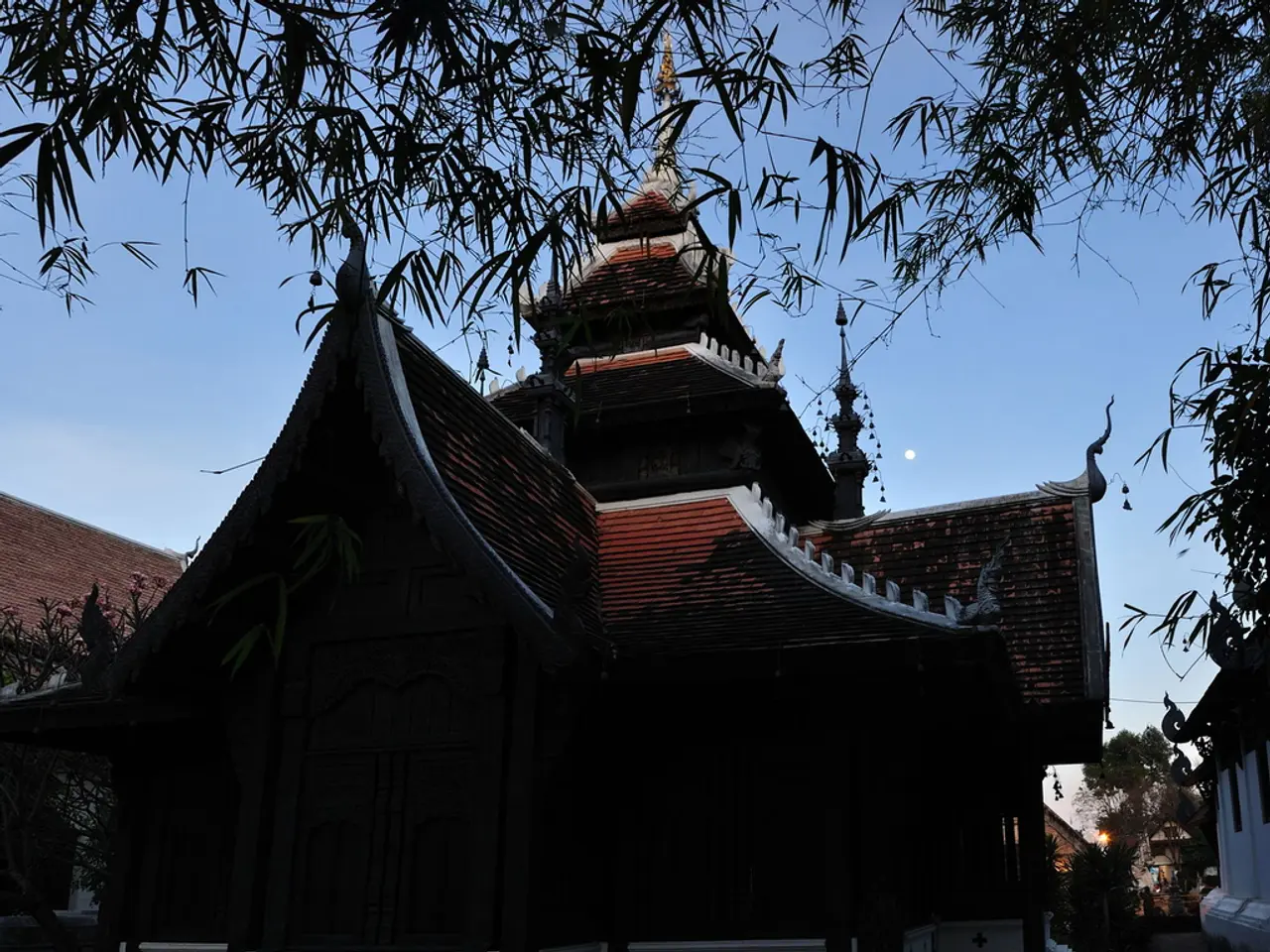Tale Unveiled: Shanghai's Oriental Pearl Tower - Not Merely a Skyline Landmark but a Rich History
The Oriental Pearl Tower: A Symphony of Culture and Modernity in Shanghai
The Oriental Pearl Tower, a striking architectural marvel that stands 468 meters tall, symbolizes Shanghai's future-focused spirit deeply rooted in tradition. This iconic landmark, completed in 1994, has become a significant touchpoint for understanding Chinese culture, history, and language, especially for Mandarin learners and cultural enthusiasts.
- A Bridge Between Past and Present
The tower's design is inspired by a classical Chinese poem, Pipa Song by Bai Juyi, which metaphorically describes the sound of the pipa (a traditional Chinese string instrument) as "pearls, big and small, falling on a jade plate." This poetic symbolism is reflected in the tower's eleven spheres of varying sizes, connecting it visually and conceptually with ancient Chinese culture and literature.
- An Icon of Modern Shanghai
Since its completion, the Oriental Pearl Tower has become an iconic landmark symbolizing Shanghai's urban development and modernization. Situated by the historic Huangpu River and facing The Bund—a district famous for colonial-era architecture—the tower bridges Shanghai’s historical and contemporary identities.
- A Linguistic Treasure Trove
The tower offers numerous language layers for Mandarin learners, from Mandarin terms related to architecture, history, and technology found in signage and museum exhibits, to historical narratives in the Shanghai History Museum housed within the tower. The name itself, "Oriental Pearl," introduces learners to poetic compound nouns and cultural semantics embedded in Chinese.
- A Cultural Immersion Experience
Beyond language learning, the tower provides an experiential cultural engagement through dining and exhibition spaces. The Oriental Pearl Revolving Restaurant offers diners panoramic city views alongside traditional and modern Shanghainese cuisine, providing opportunities for Mandarin conversation and cultural etiquette practice.
In conclusion, the Oriental Pearl Tower functions as a layered cultural and linguistic landmark, intertwining classical Chinese poetry, Shanghai’s historical-modern narrative, Mandarin language immersion, and experiential learning through dining and exhibition spaces. For Mandarin learners, it is not just a sightseeing spot but a tangible platform where language, culture, history, and modernity converge.
[1] Oriental Pearl Tower. (n.d.). In Wikipedia. https://en.wikipedia.org/wiki/Oriental_Pearl_Tower
[2] Lu, W. (2019). The Oriental Pearl Tower: A Cultural and Linguistic Landmark in Shanghai. Mandarin Weekly, 439. https://www.mandarinweekly.com/2019/01/the-oriental-pearl-tower-a-cultural-and-linguistic-landmark-in-shanghai/
[3] Zhang, L. (2017). The Oriental Pearl Tower: A Journey Through Shanghai's History and Culture. China Culture Corner. https://www.chinaculture.org/en-us/focus/2017-09/27/content_331041.htm
[4] Shanghai History Museum. (n.d.). In Wikipedia. https://en.wikipedia.org/wiki/Shanghai_History_Museum
- The Oriental Pearl Tower, with its design inspired by a Chinese poem and its integration of modern technology, offers a unique blending of ancient and contemporary lifestyles within Shanghai's vibrant urban landscape.
- In addition to its architectural and historical significance, the tower serves as an ideal location for travelers to immerse in the Mandarin language, enhancing their travel experience by engaging in conversations, exploring exhibition spaces, and familiarizing themselves with Chinese cultural nuances.




